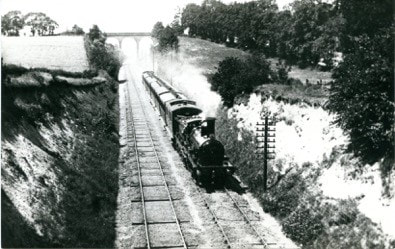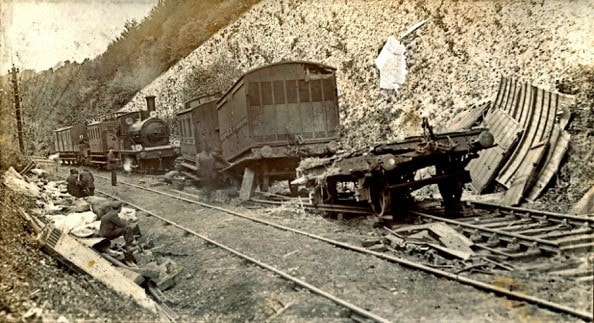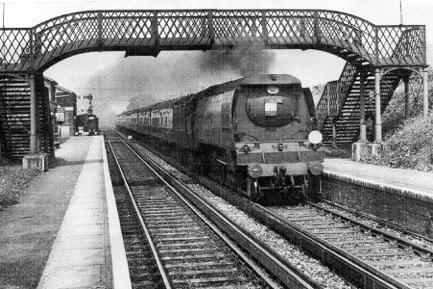SOle Street Station (A Brief History)

An excerpt from 'The London, Chatham and Dover Railway' by Adrian Gray, published in 1984: 'As construction of the Western Extension progressed, the usual discussions about the siting of stations began. The largest settlement between Strood and St. Mary Cray was Cobham, but Lord Darnley of Cobham Hall was implacably opposed to any station bearing the name of the village. The nearest site to Cobham proved to be Sole Street, which was considered by the Board as early as May 1858 though the final decision was not made until August 1859. Approved at the same time was a station at Meopham Road, so referred to it as it was 1.5 miles from the village of that name though it never carried the suffix in public service. These two stations were within a mile of each other and it was Sole Street that was rated as the most important since it was closer to Cobham. In fact the construction of permanent station buildings at Meopham was not decided on until March 1861, when it was seen as a good base for an omnibus link to Gravesend. Sole Street opened with the rest of the line on 1st February 1861 and from March 1861 its passengers were empowered to stop one express train each day by signal - presumably a concession to satisfy Lord Darnley.'
|
Local historians have, over the years, managed to piece together details of a derailment that occurred at 'Bush Bank' in 1897. A copy of an old map revealed an Upper and Lower Bush on either side of the railway tracks towards the bottom end of Sole Street bank, just before the curve into Strood and the Medway towns.
|
|
To commemorate the 150th anniversary of the Station opening, local villagers were asked to record some of their Station memories. Here are a few:
'I've been told that when the station master, John Biles, lived at the station, commuters used to walk across the fields from Henley Street, change from their wellingtons to their City shoes, then the station master cleaned their wellingtons in time for their return.' 'In October every year all the local farmers would have their young 'red pole' bullocks delivered to Sole Street by rail. They were then unloaded into the cattle pen ready for the farmers to drive them along the roads to various farms.' 'In 1938 500 ponies from Dartmoor were transported to Sole Street by rail to be moved to Henley Banks, Luddesdowne. I helped my Dad and porters do this. This problem has been highlighted recently - lack of enough grass on Dartmoor. My Dad and I walked Henley Downs every Sunday thereafter to make sure all the ponies were well.' |
If you visit Sole Street Station you will find some folders in the waiting room that contain more information on the Station's history.



